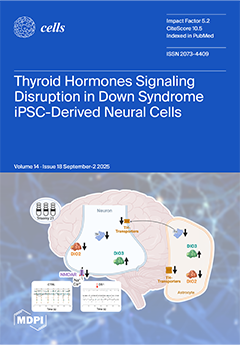ATHB1, an
Arabidopsis thaliana homeodomain-leucine zipper (HD-Zip) transcription factor, is involved in the control of leaf development and hypocotyl elongation under short-day conditions. As growth adaptation to environmental conditions is essential for plant resilience, we investigated the role of
ATHB1 in the interaction
[...] Read more.
ATHB1, an
Arabidopsis thaliana homeodomain-leucine zipper (HD-Zip) transcription factor, is involved in the control of leaf development and hypocotyl elongation under short-day conditions. As growth adaptation to environmental conditions is essential for plant resilience, we investigated the role of
ATHB1 in the interaction between transcriptional regulatory networks and hormone signaling pathways. We found that wounding, flooding and ethylene induce
ATHB1 expression. In addition, we found that the ethylene signal transduction pathway is also involved in an age-dependent
ATHB1 expression increase in leaves. Conversely, methyl jasmonate (MeJA) application decreases the
ATHB1 transcript level. By exploiting mutant and over-expressing (OE) lines, we also found that the ATHB1 level influences plant sensitivity to the inhibitory effect of MeJA treatment on growth. To gain deeper insights into the regulatory pathways affected by
ATHB1, we performed a microarray analysis comparing the transcriptome of wild-type and
athb1 mutant plants following exposure to MeJA. Remarkably, although the response to the MeJA treatment was not impaired in
athb1, several genes involved in jasmonate and salycilic acid signaling were already downregulated in
athb1 seedlings under normal conditions compared to the wild type. Thus, our study suggests that
ATHB1 may integrate different hormone signaling pathways to influence plant growth under various stress conditions.
Full article






